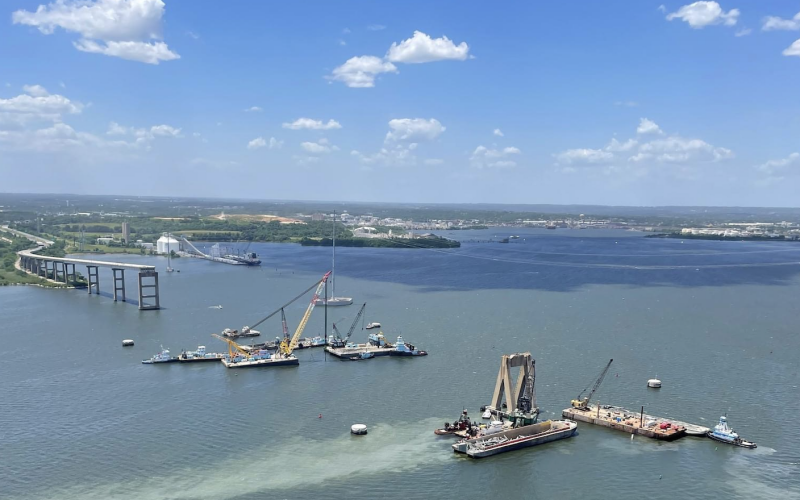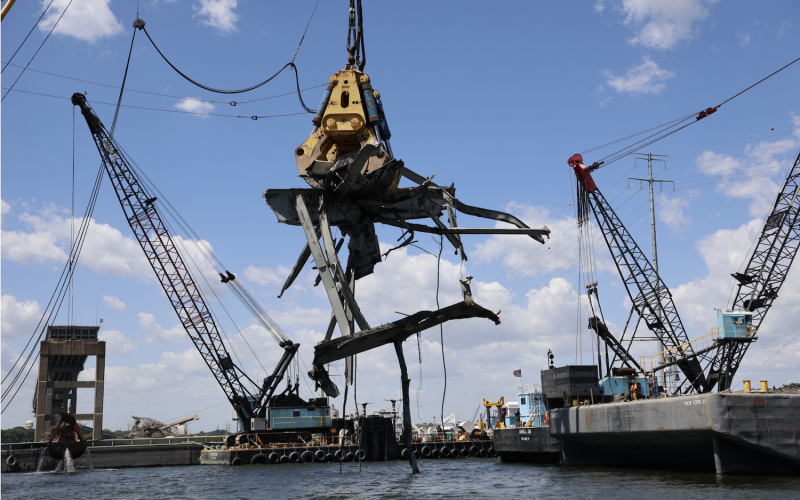Baltimore’s main shipping channel is fully restored to its original operational dimensions of 700 feet wide and 50 feet deep, 11 weeks after the Francis Scott Key Bridge was struck and collapsed by the container ship Dali.
“Surveying and removal of steel at and below the 50-foot mud-line will continue to ensure future dredging operations are not impacted,” according to a statement by the Army corps Baltimore District. “Now, the fully operational channel enables the flexibility to regain two-way traffic and cancel the additional safety requirements that were implemented because of the reduced channel width.”
The outbound 985’ Dali lost power and slammed into a bridge pier around 1:30 a.m. March 26, killing six road construction workers on the bridge. The Dali and its crew remained stranded there until the ship was moved May 20, amid the massive response effort. The following day a limited access channel 400’ feet wide allowed deep-draft vessels to mske one-way transits.
“We are proud of the unified efforts that fully reopened the Federal Channel to port operations,” said Lt. Gen. Scott Spellmon, the Corps of Engneers. “The partnerships that endured through this response made this pivotal mission successful.”
At its highest point, the Unified Command, consisting of six agencies, led the response efforts among about 56 federal, state, and local agencies, represented by 1,587 individual responders, according to a summary by the agency. About 500 specialists from around the world operated a fleet of 18 barges, 22 tugboats, 13 floating cranes, 10 excavators, and four survey boats.
Salvors are continuing to barge bridge wreckage will to Sparrows Point for processing and recycling. The follow-on work in the channel will be part of routine maintenance, “ensuring future dredging operations will not be impacted,” according to the corps.
“Although the overarching goal to restore full operational capacity to the Federal Channel was successful, each day, we thought of those who lost their lives, their families, and the workers impacted by this tragic event,” said Col. Estee Pinchasin, the corps’ Baltimore District commander. “Not a day went by that we didn’t think about all of them, and that kept us going.”





